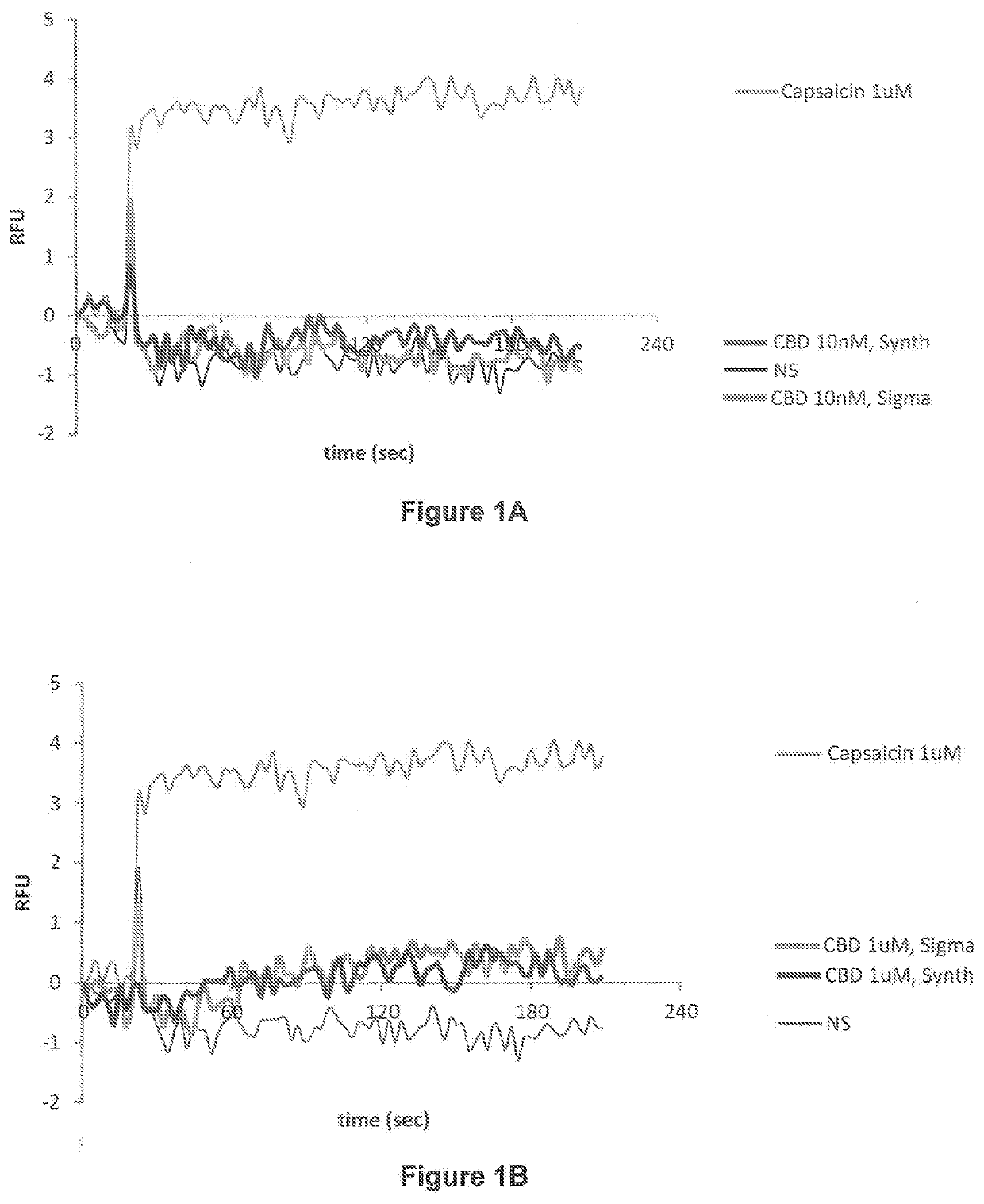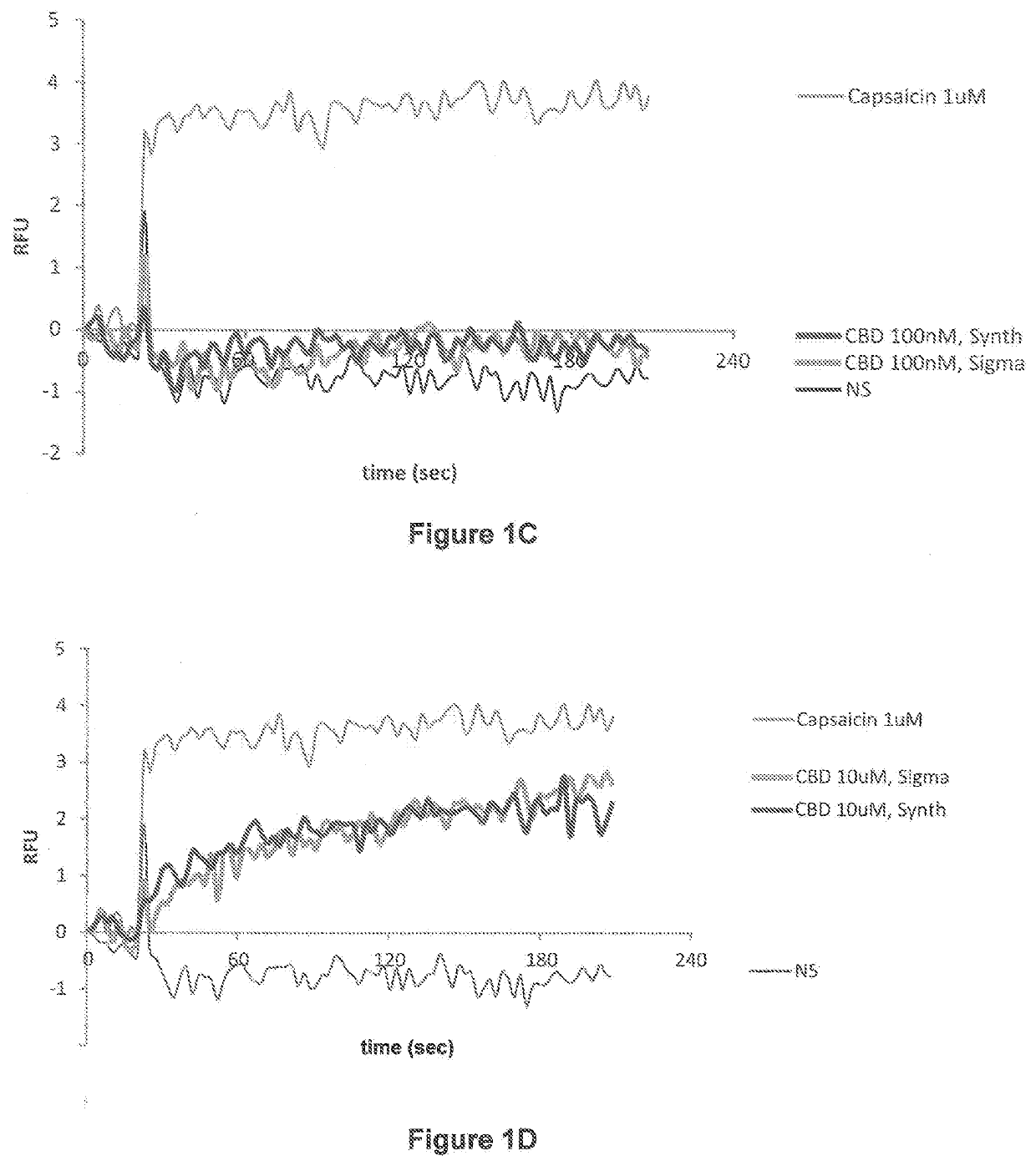Process for the Production of Cannabinoids
a technology of cannabinoids and processing methods, applied in the direction of organic active ingredients, chemical apparatuses and processes, organic chemistry, etc., can solve the problems of inefficient and costly sup>8/sup>-tetrahydrocannabinol, difficult reproducible production and storage, and many cannabinoid natural products obtained
- Summary
- Abstract
- Description
- Claims
- Application Information
AI Technical Summary
Benefits of technology
Problems solved by technology
Method used
Image
Examples
example 2
-Methyl-4-(prop-1-en-2-yl)cyclohex-2-en-1-yl 2-(2-(2,2-dimethyl-4-oxo-4H-1,3-dioxin-6-yl)acetyl)-3-oxooctanoate
[0511]Pyridine (1.2 mL, 14 mmol, 2.0 equiv) and MgCl2 (0.66 g, 6.9 mmol, 1.0 equiv) were added to a solution of (1R,4R)-1-methyl-4-(prop-1-en-2-yl)cyclohex-2-en-1-yl 4-(2,2-dimethyl-4-oxo-4H-1,3-dioxin-6-yl)-3-oxobutanoate (6, R1=R2=Rα=Rβ=CH3) (2.5 g, 6.9 mmol, 1.0 equiv) in anhydrous dichloromethane (50 mL) cooled to 0° C. Hexanoyl chloride (1.3 g, 10 mmol, 1.5 equiv) was added dropwise, and the mixture was stirred for one hour. The cooling bath was removed and the mixture was stirred for a further two hours. Saturated aqueous NH4Cl (50 mL) was added and the layers were separated. The aqueous layer was extracted with dichloromethane (3×50 mL). The organic extracts were washed with brine (50 mL), dried over MgSO4, filtered, and concentrated under reduced pressure. The crude material was purified by flash column chromatography (EtOAc:pentane; 2:20) to furnish the title compo...
example 4
ol (11)
[0513]Aqueous 6 M NaOH (4 mL) was purged with nitrogen for five minutes in a sealable reaction vial. A nitrogen purged solution of 7-hydroxy-2,2-dimethyl-8-((1R,6R)-3-methyl-6-(prop-1-en-2-yl)cyclohex-2-en-1-yl)-5-pentyl-4H-benzo[d][1,3]dioxin-4-one (80 mg, 0.20 mmol) in methanol (4 mL) was added to the aqueous solution. The reaction vial was sealed and the solution was heated to 120° C. for five hours. The reaction solution was added to vigorously stirring 10% aqueous citric acid (10 mL) and Et2O (10 mL). After five minutes, the layers were separated and the aqueous layer was extracted with Et2O (3×10 mL). The ether extracts were washed with brine (30 mL), dried over MgSO4, filtered, and concentrated under reduced pressure. The crude product was purified by flash column chromatography (Et2O:pentane; 1:20 to 2:20) providing the cannabidiol (11) as an white solid (38 mg, 0.12 mmol, 60%): 1H NMR (400 MHz, MeOD) δ 6.07 (s, 2H), 5.28 (dq, J=2.3, 1.3 Hz, 1H), 4.49-4.39 (m, 2H), 3....
example 6
of Synthetic Cannabidiol (11)
[0516]TRPV channel activity was utilized to assess and show that the biological activity of the synthesized cannabidiol (11, CBD), described herein, was the same as cannabidiol reference standard, thus further confirming the identity of the synthesized cannabidiol (11, CBD). TRPV channels including TRPV1 have been shown to mediate effects of cannabinoids (H. Turner, D. Chueh, T. Ortiz, A. J. Stokes and A. L. Small-Howard, Therapeutics in Parkinson's Disease: Promise and Paradox, Journal of Herbs, Spices & Medicinal Plants, 2017, volume 23, 2017, pages 231-248) and (B. Costa, G. Giagnoni, C. Franke, A. E. Trovato and M. Colleoni, Vanilloid TRPV1 receptor mediates the antihyperalgesic effect of the nonpsychoactive cannabinoid, cannabidiol, in a rat model of acute inflammation, British Journal of Pharmacology, 2004, volume 143, pages 247-250) and capsaicin, also useful as a reference standard (I. Díaz-Franulic, J. Caceres-Molina, R. V. Sepulveda, F. Gonzale...
PUM
| Property | Measurement | Unit |
|---|---|---|
| Purity | aaaaa | aaaaa |
Abstract
Description
Claims
Application Information
 Login to View More
Login to View More - R&D
- Intellectual Property
- Life Sciences
- Materials
- Tech Scout
- Unparalleled Data Quality
- Higher Quality Content
- 60% Fewer Hallucinations
Browse by: Latest US Patents, China's latest patents, Technical Efficacy Thesaurus, Application Domain, Technology Topic, Popular Technical Reports.
© 2025 PatSnap. All rights reserved.Legal|Privacy policy|Modern Slavery Act Transparency Statement|Sitemap|About US| Contact US: help@patsnap.com



